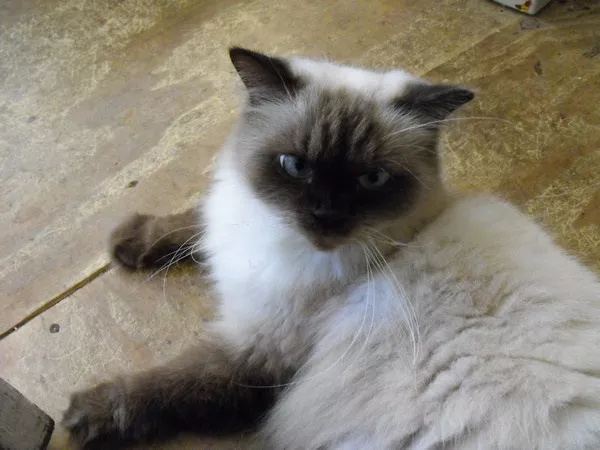Cats are obligate carnivores, meaning they need meat to survive. A healthy diet is crucial for their growth, energy, and overall well-being. But with so many food options available, how do you choose the best one? This article will guide you through the healthiest diet for your feline friend, covering essential nutrients, food types, and feeding tips.
Understanding a Cat’s Nutritional Needs
Cats require a diet rich in protein, fats, vitamins, and minerals. Unlike humans or dogs, they cannot thrive on plant-based foods alone. Here’s what their diet must include:
1. High-Quality Animal Protein
Protein is the most important part of a cat’s diet. It helps build muscles, repair tissues, and support the immune system. Look for foods where the first ingredient is a named meat source, such as chicken, turkey, beef, or fish. Avoid vague terms like “meat by-products.”
2. Essential Fats
Fats provide energy and keep a cat’s skin and coat healthy. Omega-3 and Omega-6 fatty acids are especially important. These are found in fish oil, chicken fat, and flaxseed (though plant-based sources are less effective for cats).
3. Taurine
Taurine is an amino acid that cats cannot produce on their own. A deficiency can lead to heart disease and vision problems. High-quality cat foods always include taurine.
4. Vitamins and Minerals
Cats need vitamins like A, D, E, and B-complex, as well as minerals like calcium and phosphorus. These support bone health, digestion, and organ function.
5. Water
Cats have a low thirst drive, so wet food is beneficial to keep them hydrated. Dry food alone may lead to urinary tract issues.
Types of Cat Food: Pros and Cons
There are three main types of cat food: dry, wet, and raw. Each has advantages and drawbacks.
Dry Food (Kibble)
Pros:
Convenient and long-lasting
Helps clean teeth by reducing plaque
Usually more affordable
Cons:
Low moisture content (can cause dehydration)
Often contains fillers like corn and wheat
May have lower protein quality
Wet Food (Canned or Pouches)
Pros:
High moisture content (good for hydration)
Typically higher in protein and fewer carbs
More palatable for picky eaters
Cons:
More expensive than dry food
Spoils quickly once opened
Can contribute to dental plaque if not supplemented with dry food
Raw Food (Homemade or Commercial)
Pros:
Mimics a cat’s natural diet
No artificial additives
High in protein and moisture
Cons:
Risk of bacterial contamination (Salmonella, E. coli)
Requires careful balancing of nutrients
Time-consuming to prepare
How to Choose the Best Commercial Cat Food
Not all cat foods are created equal. Here’s how to pick a high-quality option:
Check the Ingredients List
The first ingredient should be a real meat source (e.g., “chicken,” not “chicken meal”).
Avoid foods with artificial colors, flavors, or preservatives.
Look for AAFCO (Association of American Feed Control Officials) approval, ensuring the food meets nutritional standards.
Consider Your Cat’s Age and Health
Kittens need more calories and protein for growth.
Adult cats require balanced nutrition to maintain weight.
Senior cats may need lower-calorie, easily digestible food.
Cats with health issues (kidney disease, diabetes) may need prescription diets.
Avoid Common Fillers
Cheap cat foods often contain fillers like corn, wheat, and soy. These provide little nutritional value and can cause allergies or obesity.
Homemade Cat Food: Is It a Good Idea?
Some owners prefer making their cat’s food at home. While this can be healthy, it requires careful planning.
Pros of Homemade Food
Full control over ingredients
No artificial additives
Can be tailored to allergies or sensitivities
Cons of Homemade Food
Risk of nutrient deficiencies (especially taurine and calcium)
Time-consuming to prepare
Must be properly stored to avoid spoilage
If you choose homemade food, consult a veterinarian or pet nutritionist to ensure a balanced diet.
Feeding Tips for a Healthy Cat
1. Portion Control
Overfeeding leads to obesity, a common health issue in cats. Follow feeding guidelines on the food package or ask your vet for recommendations.
2. Scheduled Meals vs. Free Feeding
Scheduled meals (2-3 times a day) help prevent overeating.
Free feeding (leaving food out all day) can lead to weight gain but works for some cats with self-control.
3. Fresh Water Always Available
Even if your cat eats wet food, always provide fresh water. Consider a cat water fountain to encourage drinking.
4. Avoid Toxic Foods
Some human foods are dangerous for cats, including:
Onions and garlic
Chocolate
Grapes and raisins
Alcohol and caffeine
Special Dietary Needs
Some cats have unique health requirements:
Weight Management
Overweight cats need a high-protein, low-carb diet. Avoid “diet” foods with excessive fillers.
Urinary Health
Cats prone to urinary crystals need wet food and controlled mineral levels. Prescription diets may help.
Food Allergies
Common allergens include beef, dairy, and fish. Hypoallergenic diets use novel proteins like rabbit or duck.
Conclusion
The healthiest diet for a cat is one that mimics their natural needs—high in animal protein, moderate in fats, and low in carbohydrates. Whether you choose dry, wet, or raw food, quality matters most. Always check ingredients, avoid fillers, and consult your vet for personalized advice. By feeding your cat a balanced diet, you ensure a long, happy, and healthy life.
Related topics:
























